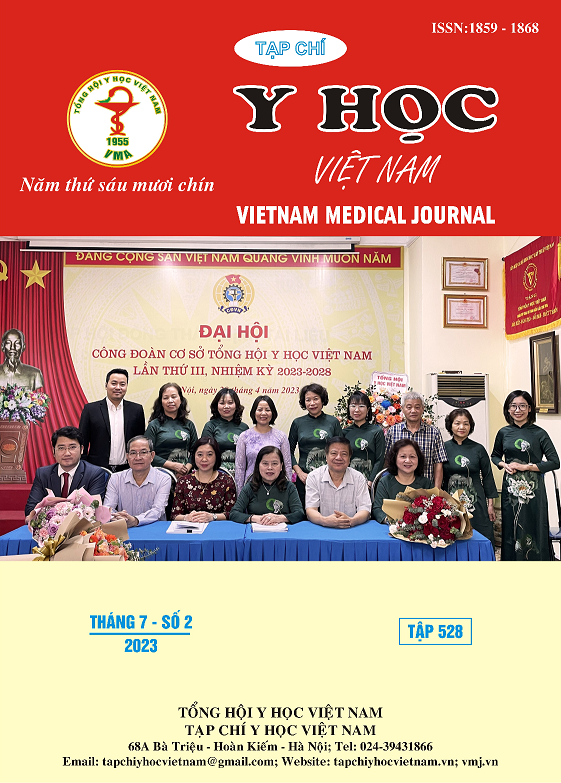KNOWLEDGE AND PRACTICE ON USING INSULIN INJECTION IN TYPE 2 DIABETES PATIENTS AT THANH NHAN HOSPITAL IN 2022
Main Article Content
Abstract
Background: diabetes is a non-communicable disease, however, the proportion of people suffering from this disease is increasing in countries around the world. Insulin injection is one of the measures to control blood sugar well in patients with type 2 diabetes. Objectives: To evaluate the knowledge and practice of self-injecting insulin of patients with type 2 diabetes at Thanh Nhan hospital in 2022. Methods: A cross-sectional study on 336 patients with type 2 diabetes at Thanh Nhan Hospital from August 2022 to January 2023. Results: 125 people (37.2%) had good knowledge about insulin injection, specifically: 91.4% of patients had correct knowledge about time to eat after injection, 88.4% of patients knew about time. expired insulin after opening, 87.8% of people know about the storage time of new unused insulin; correct knowledge about needle length and use of injection pen was 23.2% and 28.0%, respectively. Patients with correct knowledge about using syringes is 58.9%; the percentage of patients with correct knowledge about recognizing abnormalities of the injection area was 84.3%, the most incorrect knowledge was knowledge about rotation of the injection area with the rate of 87.2%. Regarding the practice, 123 people (36.6%) had successful practice, in which: the technique of taking the correct dose of insulin with the rate of 88.4%, followed by the technique of pinching the skin at the injection site with the rate of 75. ,9%. 72.6% of patients did not wash their hands before injecting, 81.5% of patients did not clean the tip of the vial before the needle was inserted, and 86.1% did not disinfect the injection site. Conclusion: The patient's knowledge and practice of insulin injection is still limited, it is necessary to actively educate the patient about insulin injection so that they can practice safe injection.
Article Details
Keywords
type 2 diabetes, insulin injection, knowledge, practice.
References
2. Vũ Thuỳ Linh, Vũ Bích Nga, Trịnh Thị Hằng (2020). Đánh giá kiến thức và thực hành tiêm insulin của người bệnh Đái Tháo Đường điều trị tại bệnh viện Đại Học Y Hà Nội. Tạp chí Nội tiêt và Đái tháo đường, 41, 36-43.
3. Australian Diabetes Educators Association (ADEA) (2015). Clinical Guiding Principles for Subcutaneous Injection Technique. Canberra.
4. Chakraborty P.P, Biswas S.N, Patra S (2016). Faulty injection technique: a preventable but often overlooked factor in insulin allergy. Diabetes Therapy,7(1):163–167.
5. Frid A.H, Hirsch L.J, Menchior A.R, et al (1016). Worldwide injection technique questionnaire study: population parameters and injection practices. Mayo Clinic Proceedings. 2016;91(9):1212–1223.
6. Kaiser P, Maxeiner S, Weise A, et al (2010). Assessment of the mixing efficiency of neutral protamine Hagedorn cartridges. J Diabetes Sci Technol, 4(3), 652–657.
7. Kalra S, Mithal A, Sahay R, et al (2017). Indian injection technique study: population characteristics and injection practices. Diabetes Ther. 2017;8:637–657.
8. Majumdar A, Sahoo J, Roy G, Kamalanathan S (1015). Improper sharp disposal practices among diabetes patients in home care settings: need for concern? Indian Journal of Endocrinology and Metabolism, 19(3):420–425.
9. Patil M, Sahoo J, Kamalanathan S, et al (2017). Assessment of insulin injection techniques among diabetes patients in a tertiary care centre. Diabetes Metab Syndr, 11(1), S53–S56.


